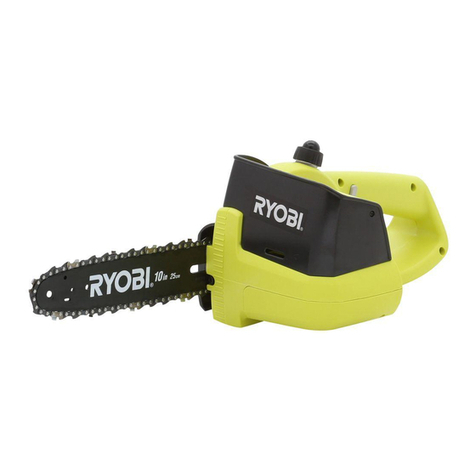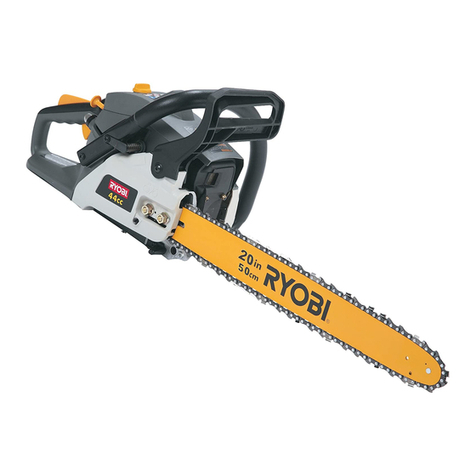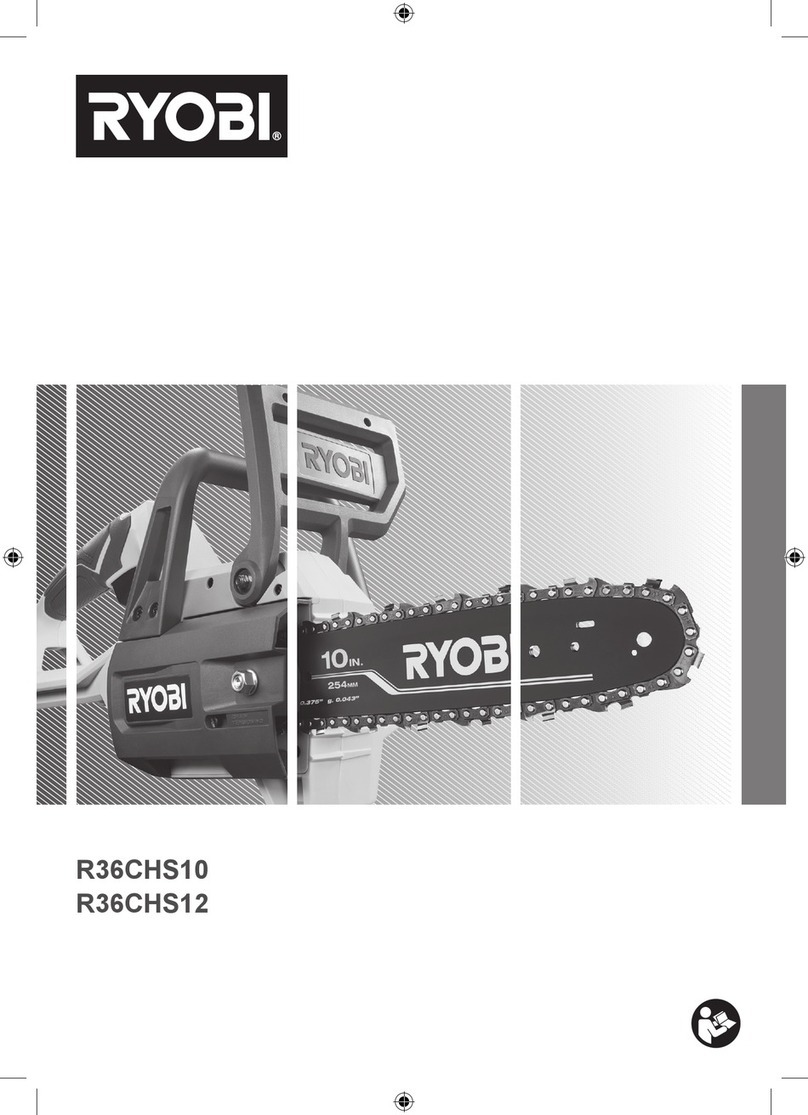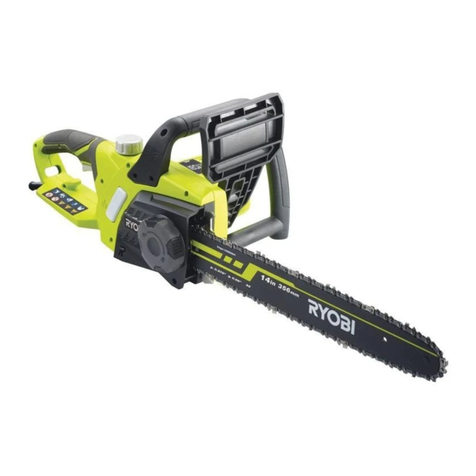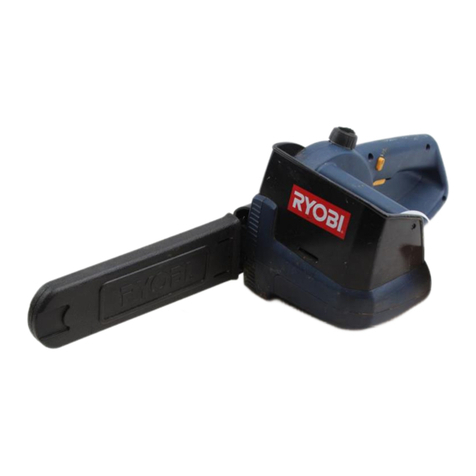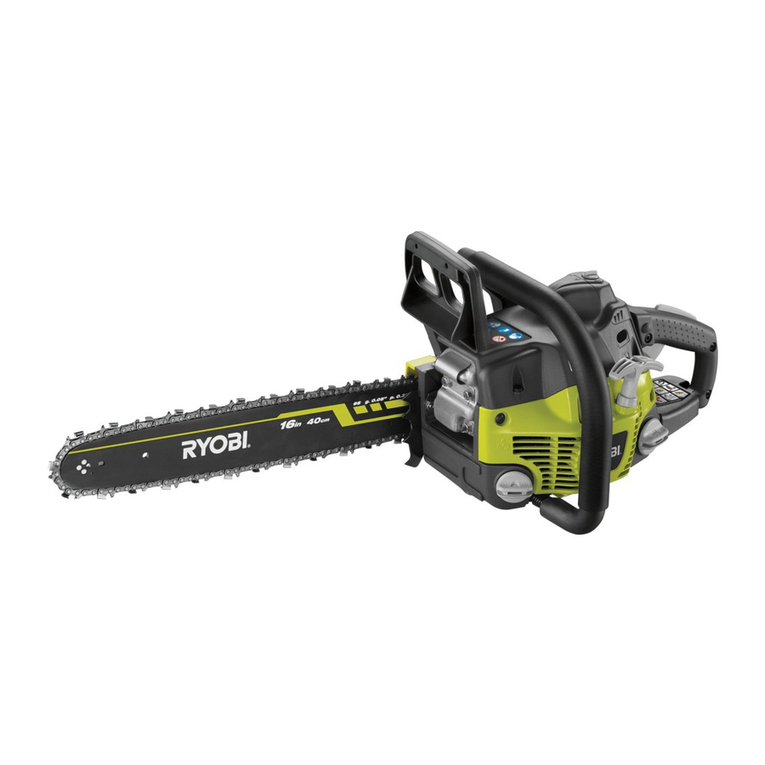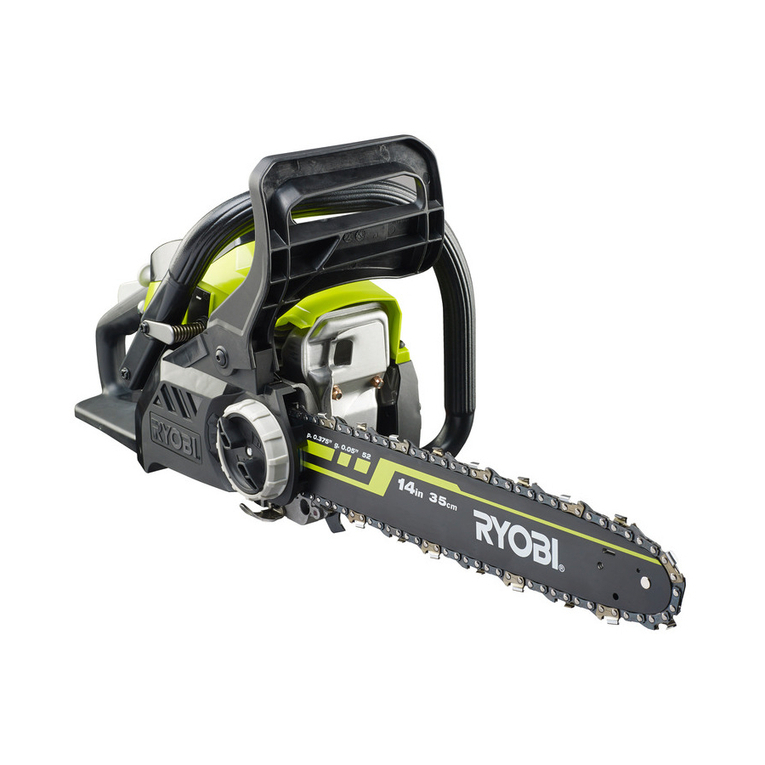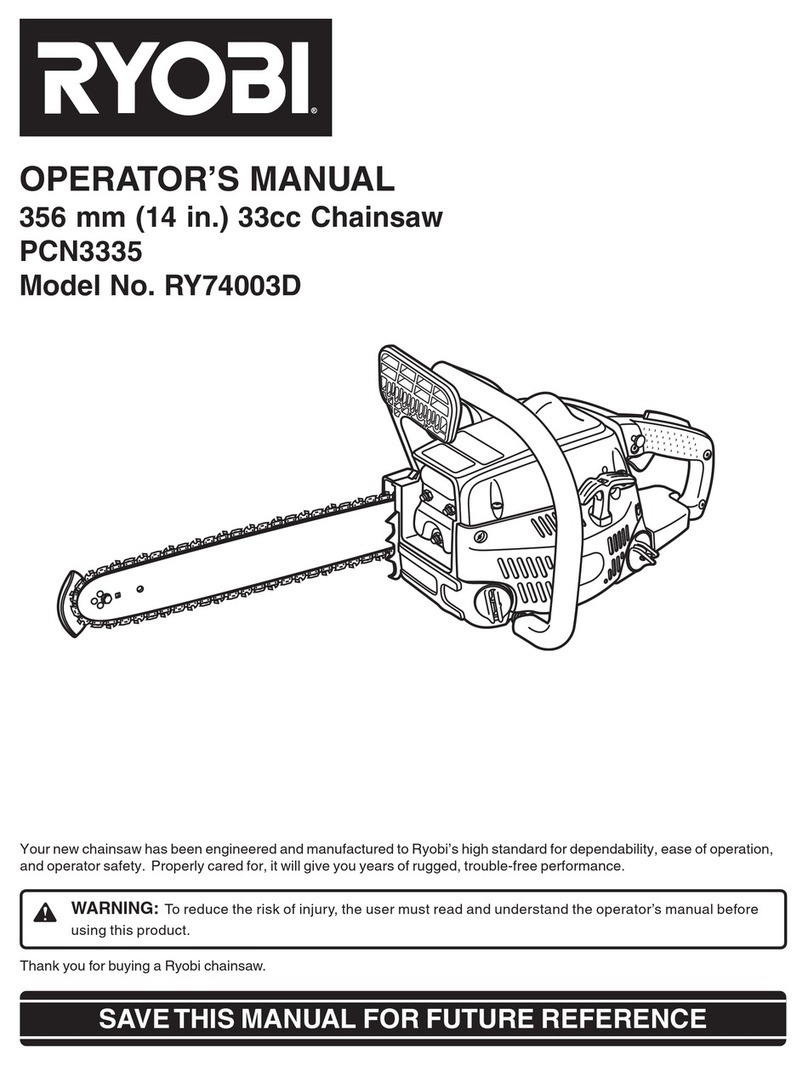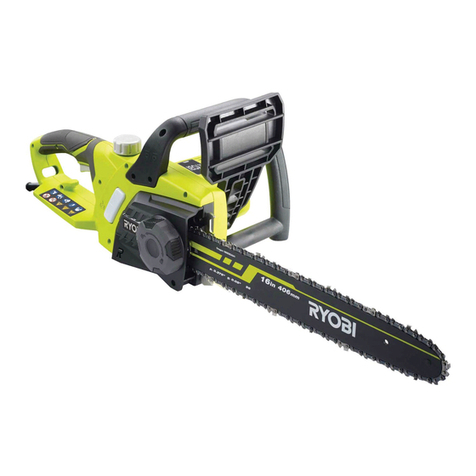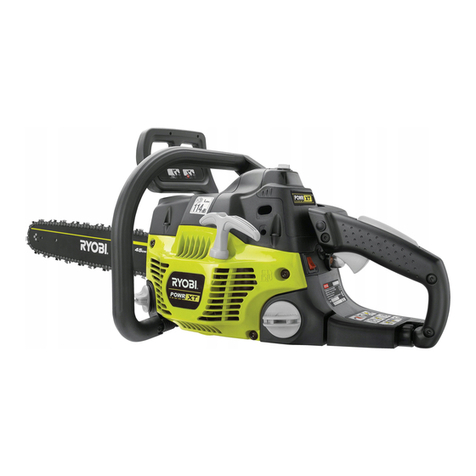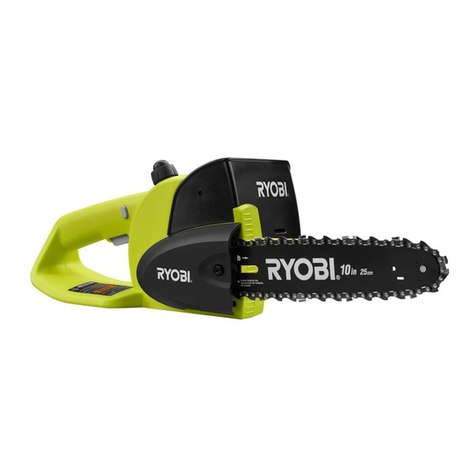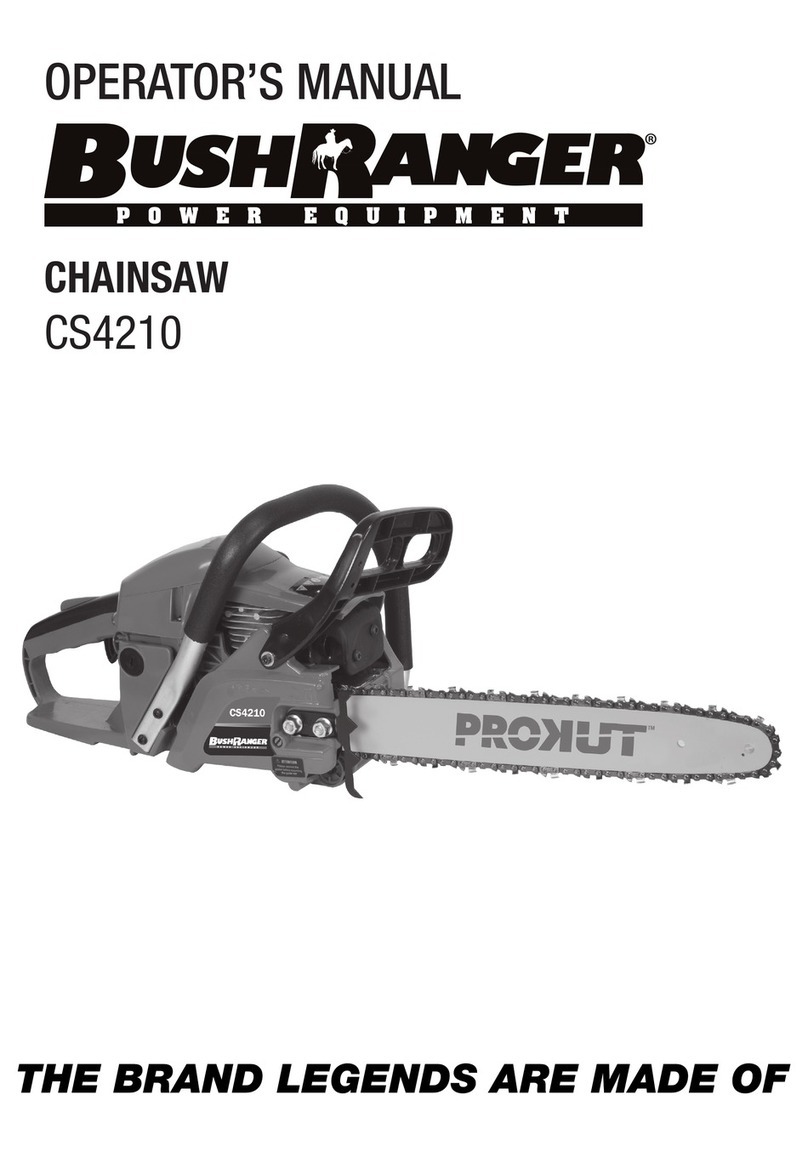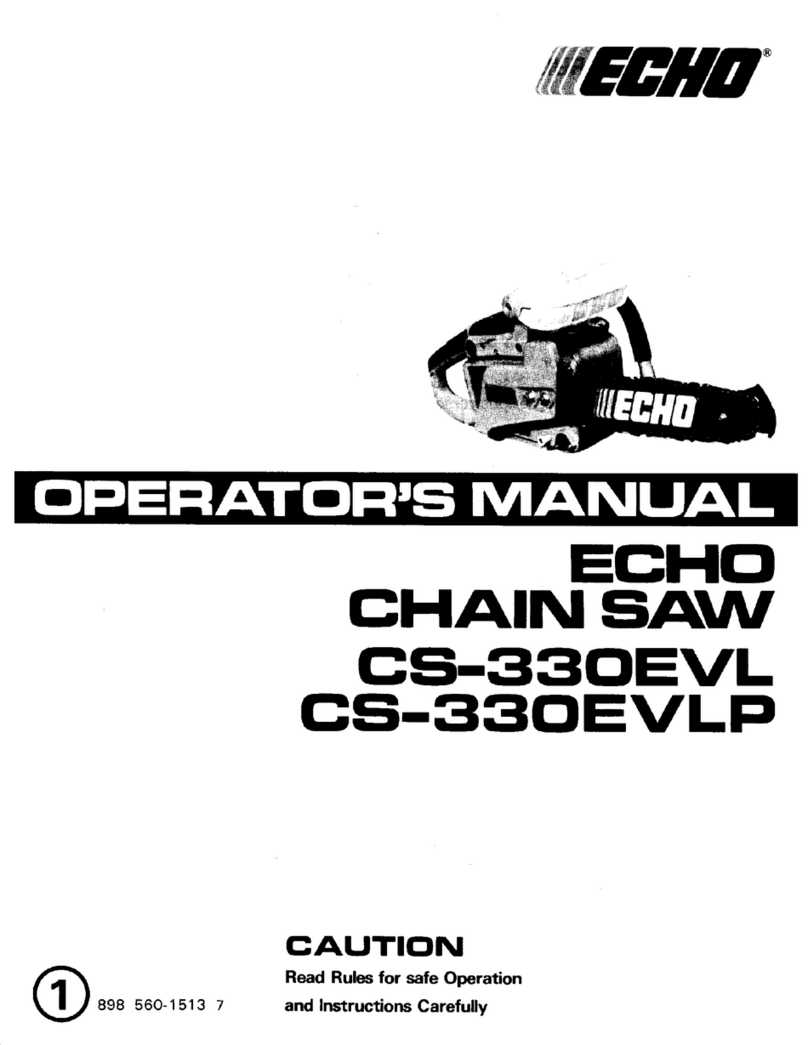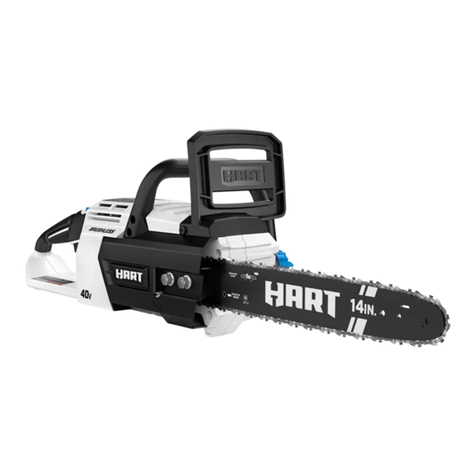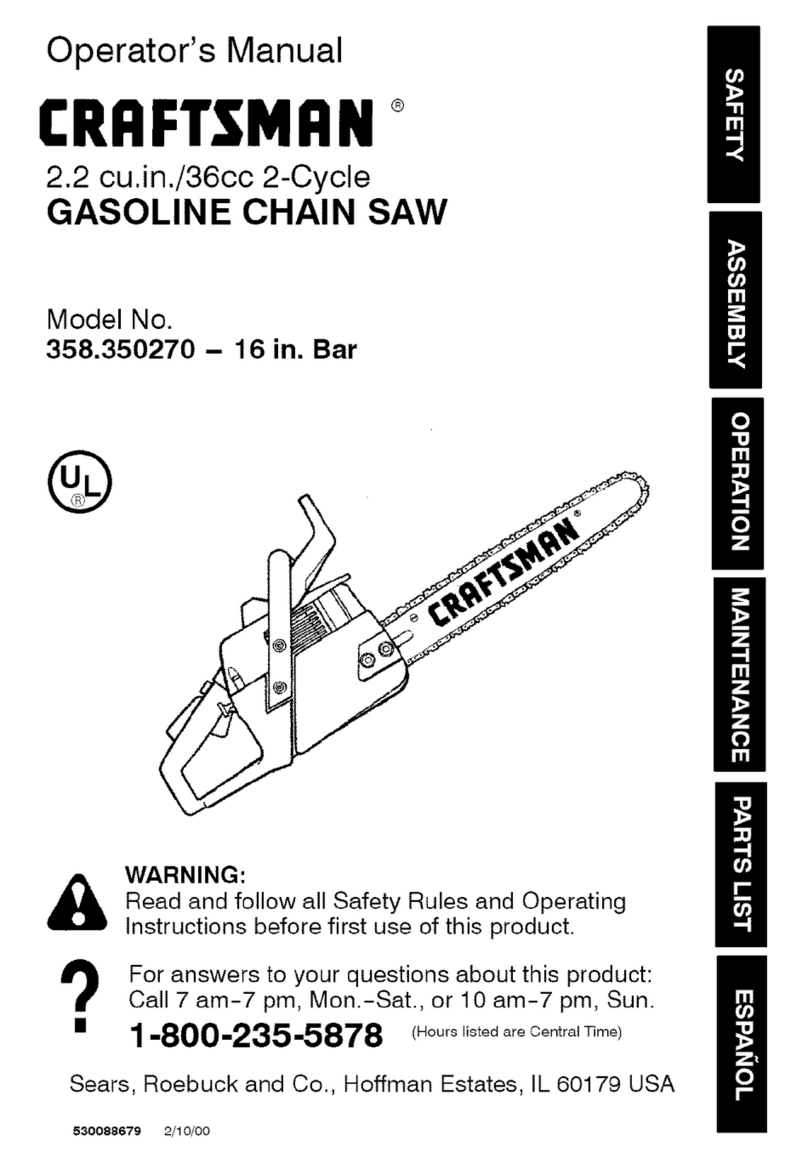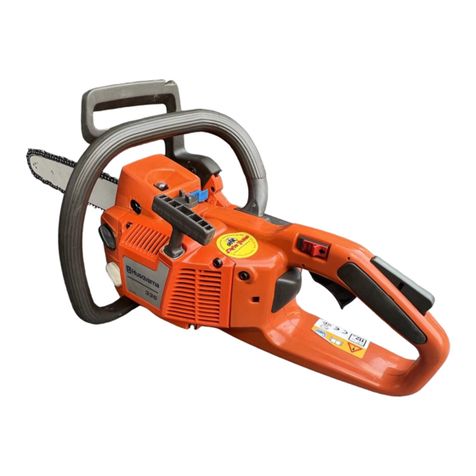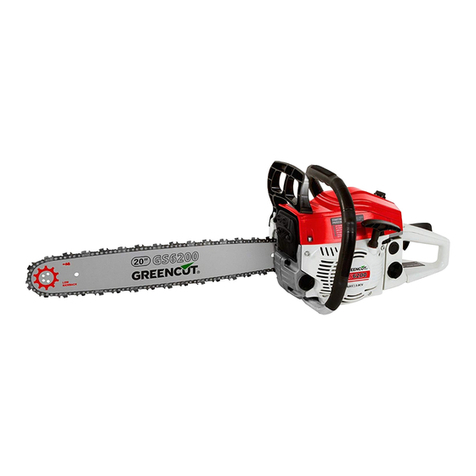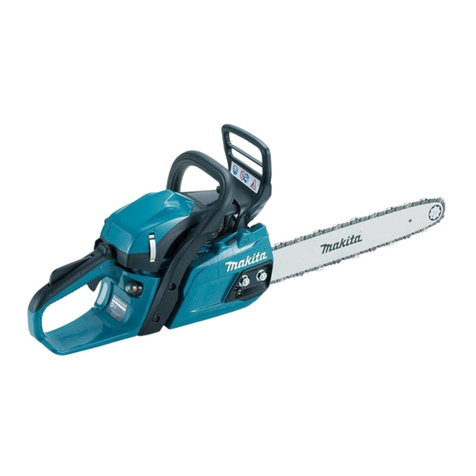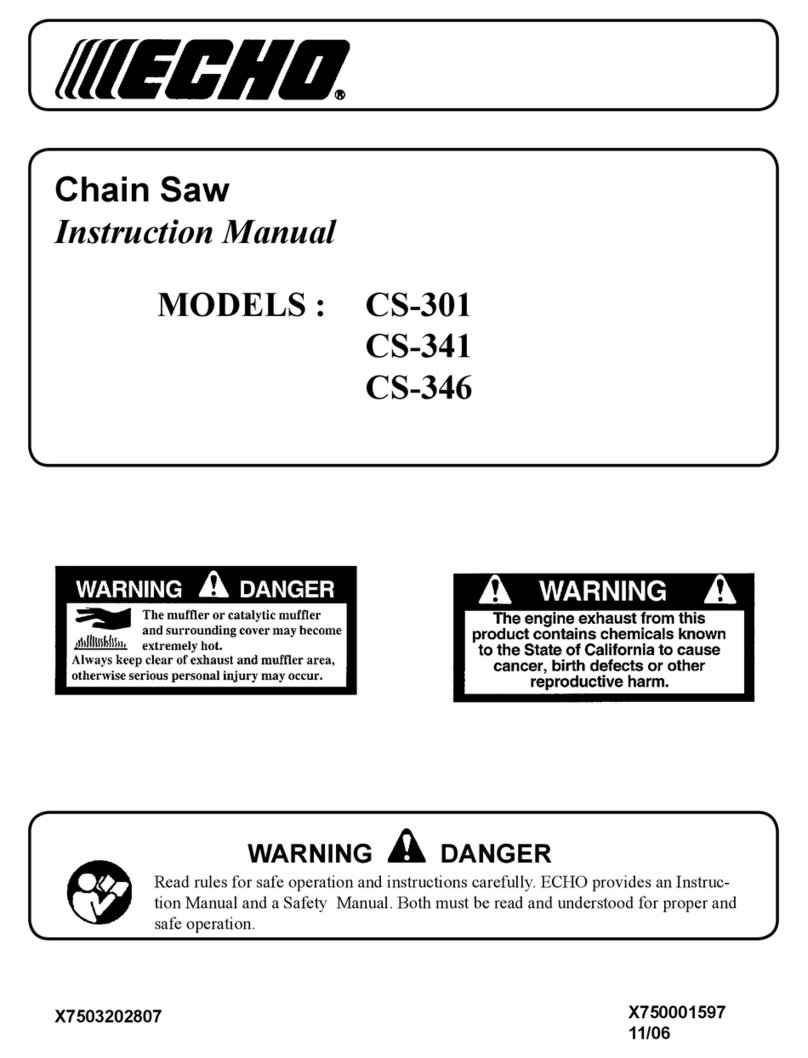
5
GENERAL SAFETY RULES
shock mounts designed to reduce the intensity of
vibration received through the handles. Exposure
to cold and vibration may cause tingling and
burning followed by loss of colour and numbness in
the fingers. We strongly recommend you taking the
following precautions because the minimum
exposure which might trigger the ailment is
unknown.
1. Keep your body warm, especially the head and
neck, feet and ankles, and hands and wrists.
2. Maintain good blood circulation by performing
vigorous arm exercises during frequent work
breaks and also by not smoking.
3. Limit the number of hours of chain saw
operation. Try to fill a part of each work day
with jobs other than chain sawing.
4. If you experience discomfort, redness and
swelling of the fingers, followed by whitening
and loss of feeling, consult your physician
before further exposing yourself to cold and
vibration.
REPETITIVE STRESS INJURIES
It is believed that over using the muscles and
tendons of the fingers, hands, arms and shoulders
may cause soreness, swelling, numbness,
weakness and extreme pain to the areas just
mentioned. To reduce the risk of repetitive stress
injury, do the following.
1. Avoid using your wrist in a bent, extended or
twisted position. Instead, try to maintain a
straight wrist position. Also, when grasping, use
your whole hand, not just the thumb and index
finger.
2. Take periodic break to minimise repetition and
rest your hands.
3. Reduce the speed and force in which you do
the repetitive movement.
4. Do exercises to strengthen the hand and arm
muscles.
5. See a doctor if you feel tingling, numbness or
pain in the fingers, hands, wrists or arms.
MACHINE CONDITIONS
Do not operate a chain saw that is damaged.
Improperly adjusted, or not completely and
securely assembled. Do not operate the chain saw
with a loose of defective silencer. Be sure that the
saw chain stops moving when the throttle control
trigger is released.
CUTTING
1. Do not operate a chain saw in a tree unless
you have been specifically trained to do so.
2. Keep all parts of your body away from the saw
chain when the engine is running.
3. Use extreme caution when cutting small-size
bushes and saplings because slender material
may catch the saw chain and be whipped
toward you or pull you off balance.
4. When cutting a limb that is under tension, be
alert for spring back so that you will not be
struck by the limb or chain saw when the
tension in the wood fibers is released.
5. Cutting while on a ladder is extremely
dangerous because the ladder can slip and
your control of the chain saw is limited. Working
aloft should be left to professionals.
6. Stop the engine before setting the chain saw
down.
SERVICES
All chain saw service, other than items listed in the
operator’s manual maintenance instruction, should
be performed by competent service personnel. (For
example, if improper tool is used to hold the
flywheel in order to remove the clutch, structural
damage to the flywheel could occur and
subsequently could cause the flywheel to burst).
WOOD PRACTICES
1. Operating a chain saw safely requires a chain
saw in proper working order, sound judgment,
and knowledge of the methods which should be
applied in each cutting situation.
2. Do not let any person use your saw unless they
have read this operator’s manual and fully
understands its instructions.
3. Never let children operate the saw.
4. Use your saw only to cut wood or wood
products. Do not cut solid metal, sheet metal,
plastics or any non-wood materials.
5. Stay on the uphill side when bucking or
lambing logs which might roll when cut.
6. Keep both feet on the ground. Do not work
from off the ground positions.
CHAIN BRAKE
Always check that the chain brake works properly
before use. The chain brake’s function is to stop
chain rotation after a kickback. It neither prevents
nor reduces kickback. Do not depend on the chain
brake for protection against kickback. Even with a
chain brake, depend on your own good sense and
proper cutting methods just as though there was
chain brake. Even with normal use and proper
maintenance, the response time of the brake may
lengthen.

